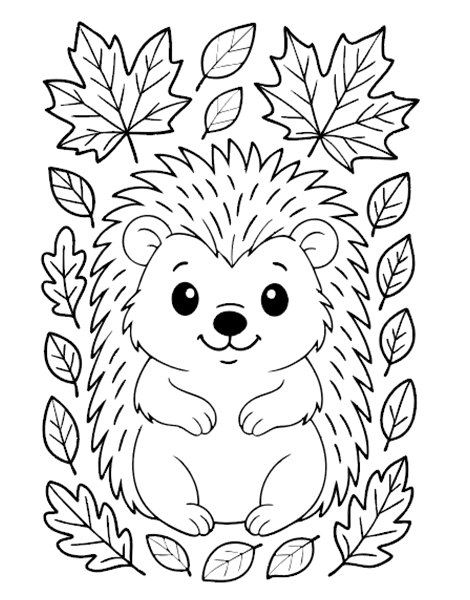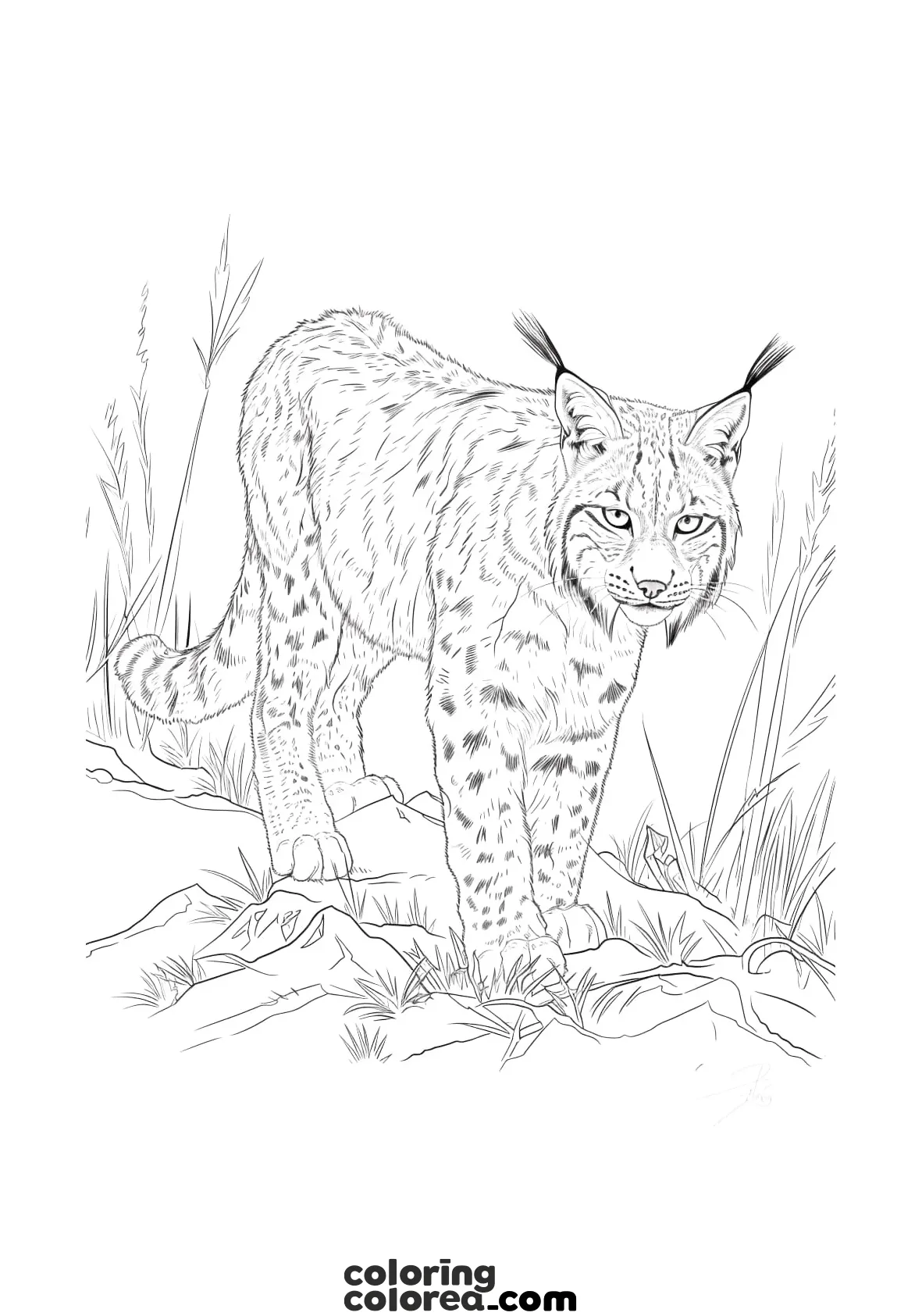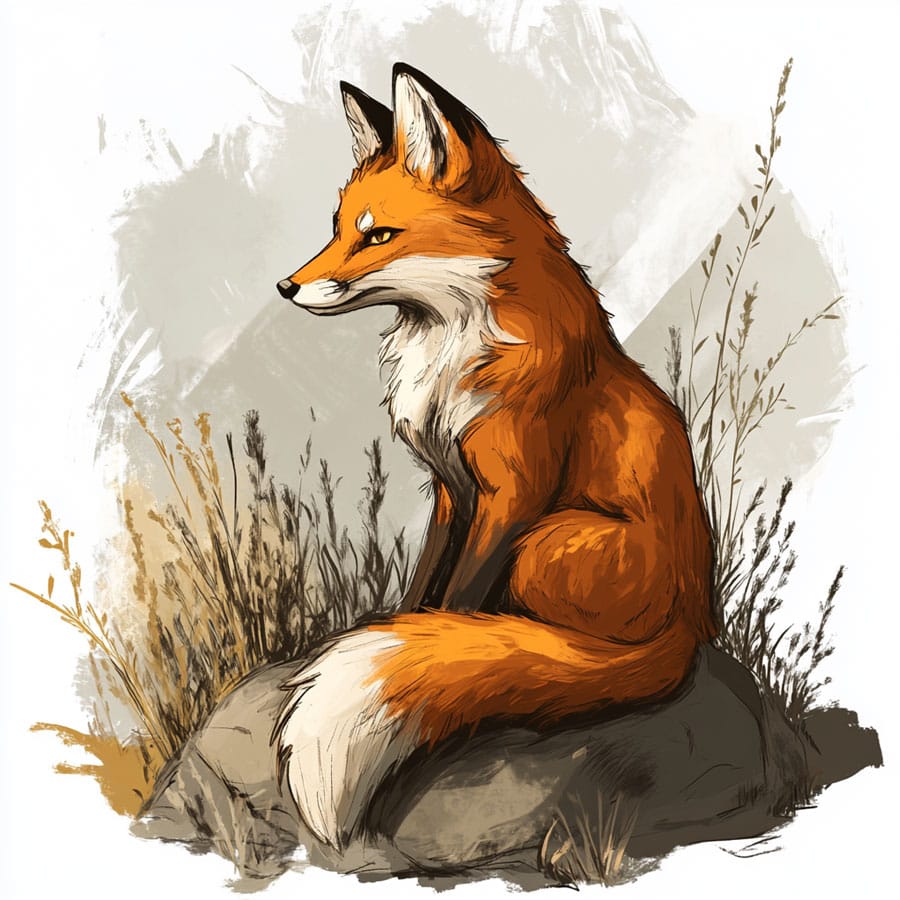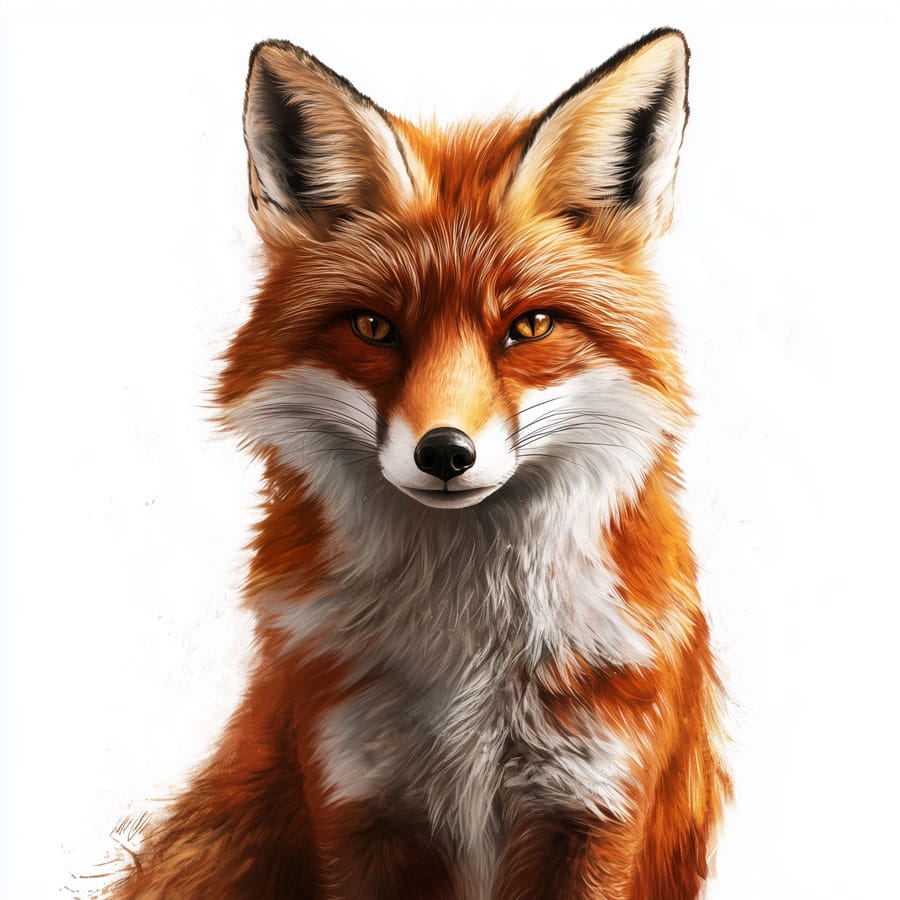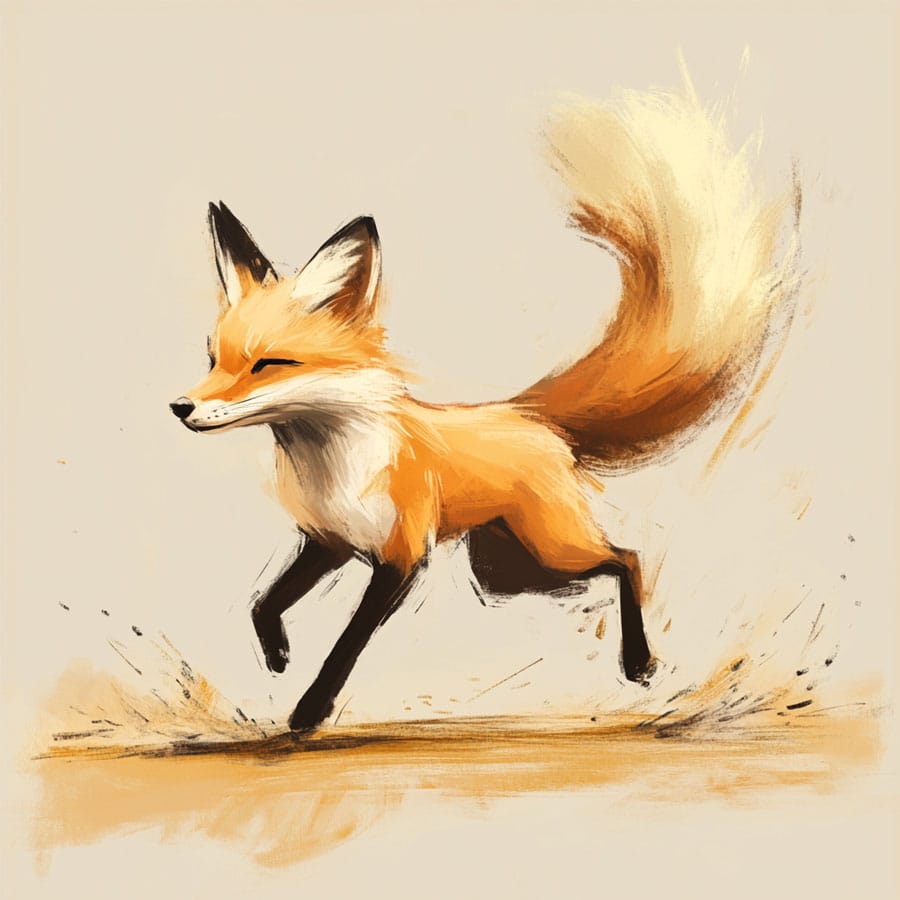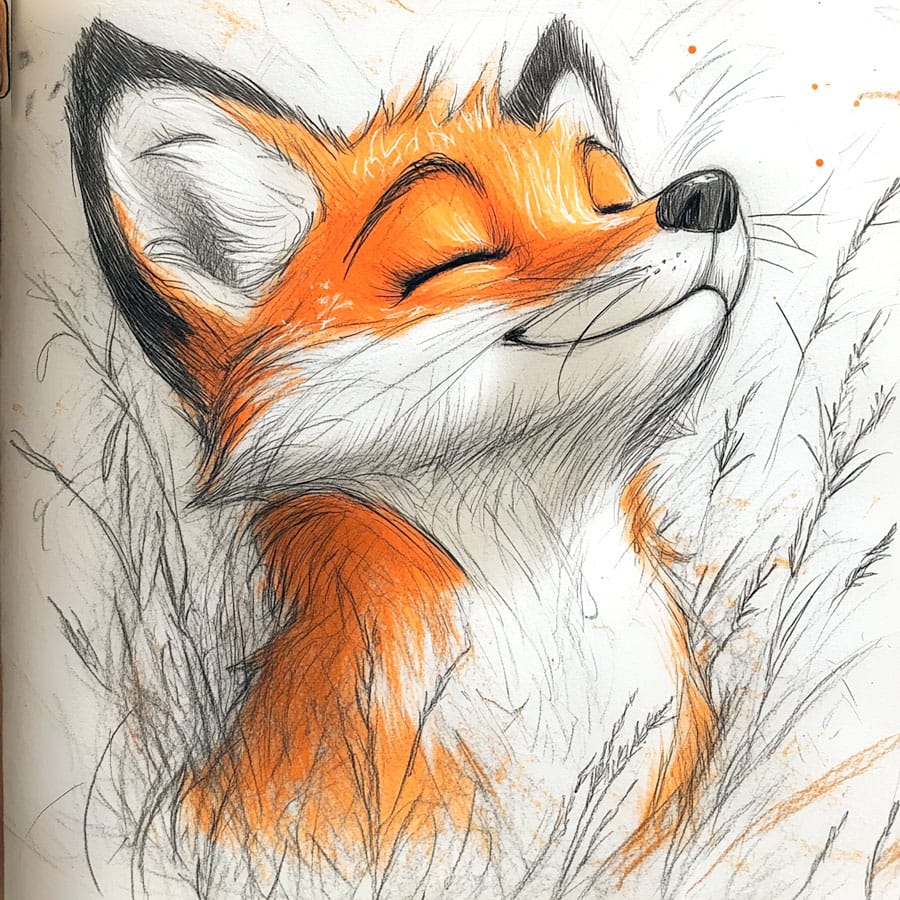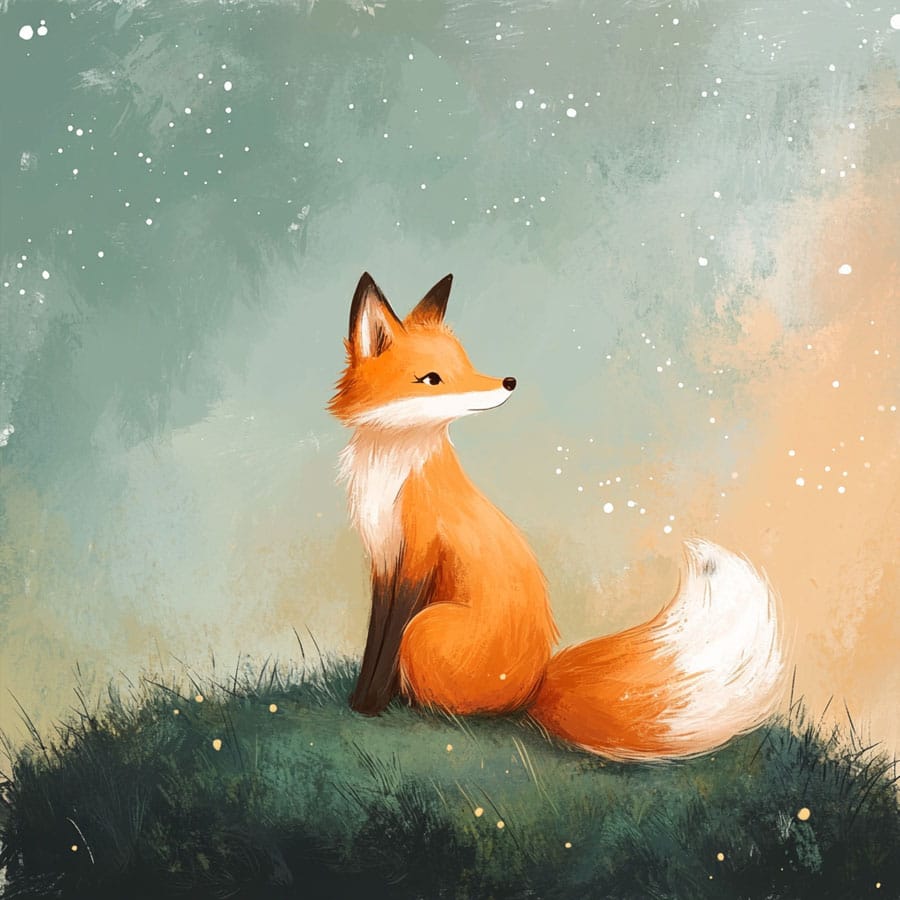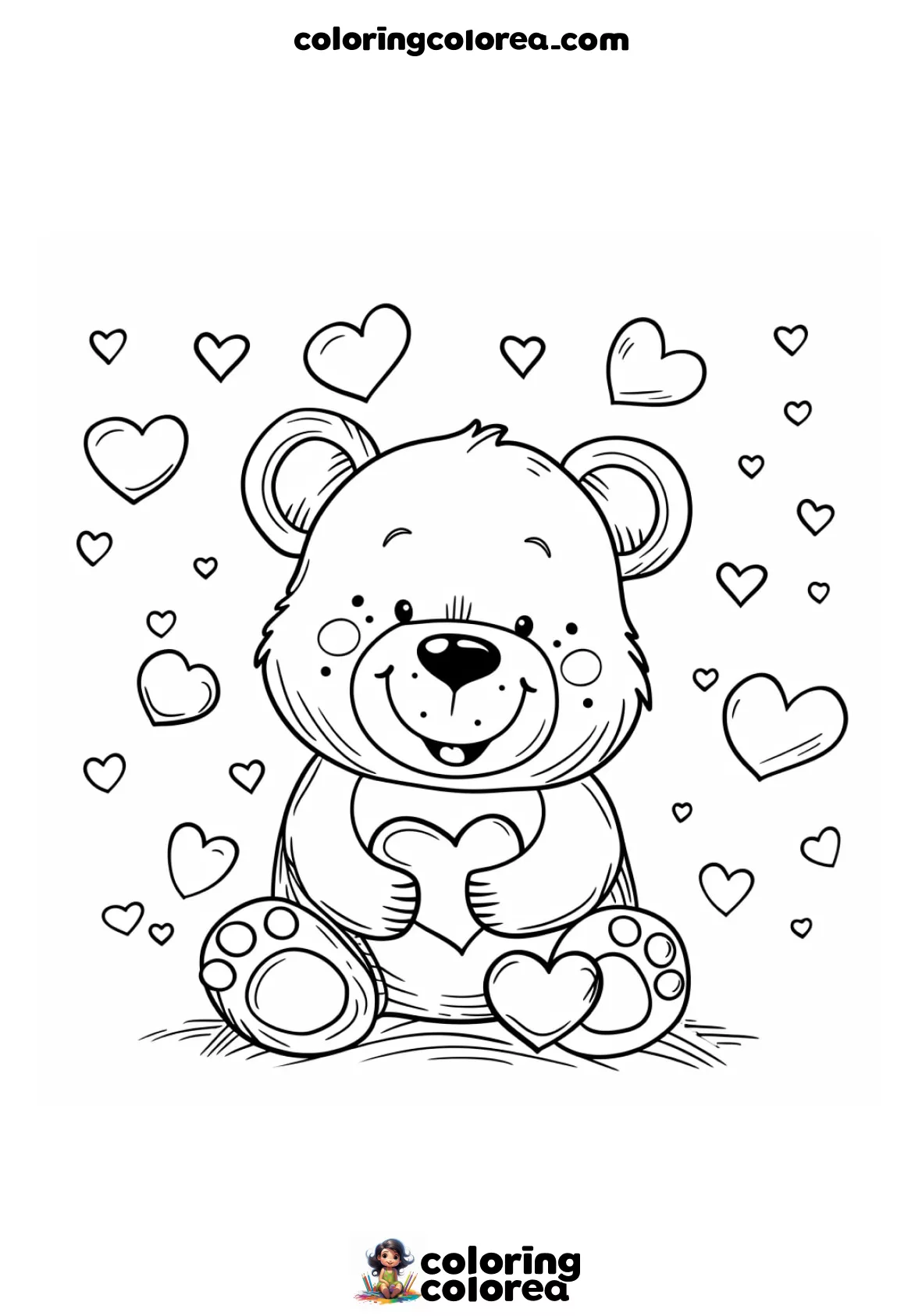The most important thing here is not to copy reality but to explore how colors can transform a drawing into something unique. With the right shades and the way you apply them, you can give this fox texture, light, depth, and personality. You can play with shadows and highlights to make it look soft and fluffy, or use bolder strokes to give it a graphic and expressive style.
Don’t be afraid to try new combinations. Mix colors, use different tools and techniques, and most of all, have fun in the process. This fox is waiting for your artistic touch to turn it into a masterpiece that is completely yours.
Techniques and colours for colouring the fox
Fox fur is often a blend of warm oranges, deep reds, and bright whites on the chest and tail tip. If you want a realistic style, mix orange shades with dark browns for shadows and golden yellow for sunlit areas. Use short, light strokes to imitate the fur texture. Small zigzag movements can add volume and depth.
The fox’s face is key to expressing emotions. Soften the eye area with lighter colors to highlight its relaxed expression. Use black or dark gray pencils to outline the ears and give the nose a touch of white shine to make it more lifelike.
For the grass surrounding the fox, play with fresh greens and yellows to create the effect of sunlight filtering through the leaves. If you prefer a nighttime scene, use bluish-greens and cooler tones. You could even add a gradient sky in the background—maybe a reddish sunset or a deep night full of stars!
Details That Make a Difference
- Soft shading: Use a slightly darker shade than the base to add volume to the fur.
- Strategic highlights: Apply white on the chest, tail tip, and reflections in the nose and eyes.
- Create an atmosphere: Add a blurred background or subtle details like falling leaves or drifting grass blades.
Now that you know some techniques, it’s time to turn this drawing into your own artwork. Let your creativity soar and give this fox a story to tell!
Do you want to know more about foxes? Click here

